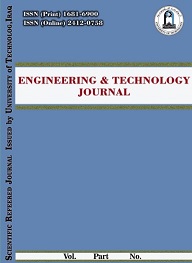Abstract
Hydraulic structures such as surface drainages and culverts are usually constructed in urban areas to drain runoff into nearby streams and rivers to avoid flooding. However, most of these structures frequently fail to serve the intended use due to high-intensity rainfall accompanied by long duration, which produces runoff discharge higher than their designed capacities. This is common in many developing countries as drainages and culverts are usually constructed without considering the catchment's hydrological analysis. Hence, this research considered Port Harcourt city as a case study by utilizing 50 years of rainfall data to develop rainfall Intensity-Duration-Frequency (IDF) curves used for the subsequent design of drainages and culverts within the city and its environs. The IDF curves were developed using Gumbel, Pearson type III, and Log-Pearson type III distributions at return periods of 2, 5, 10, 25, and 50years. However, the durations considered were 5, 10, 20, 30, 45, 60, 90, 120, 150, 180, 210, 240, 300, 360 and 420minutes. Results showed that the IDF equations developed for the three frequency distributions highly correlate with the observed intensities since their goodness of fit (R2) ranges from 0.9766 to 0.9865. Also, it was noted that there was no significant difference (p < 0.01) between the predicted rainfall intensities from all the IDF equations and the observed intensities. Notwithstanding, the IDF equation developed for Gumbel distribution was recommended to be given higher priority since it has the highest R2 value
Keywords
Gumbel
Log-Pearson type III
Pearson type III
Port Harcourt
Return-Period
